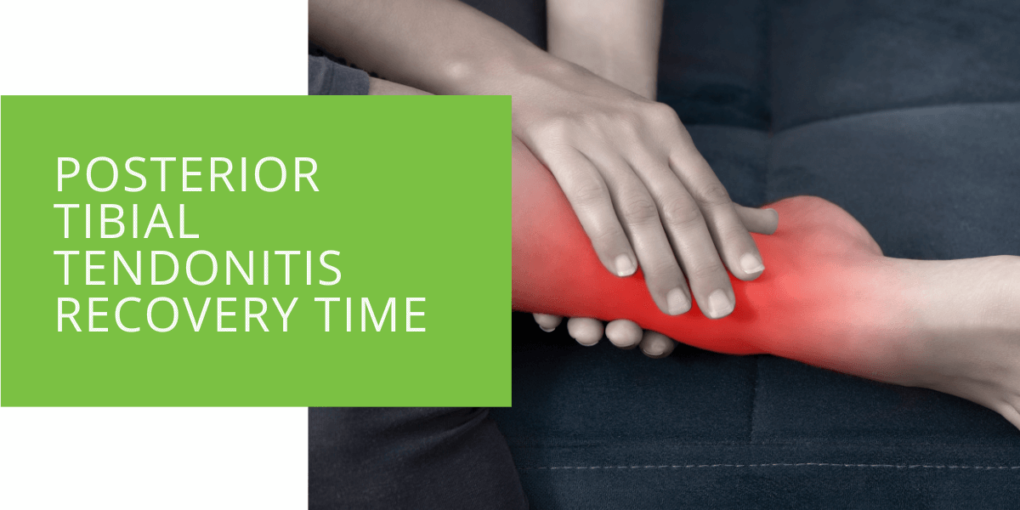Posterior Tibial Tendonitis Recovery Time
Are you experiencing pain and discomfort in your foot and ankle? It could be a result of posterior tibial tendonitis, a condition that affects the posterior tibial tendon. Understanding the recovery process is crucial for effective treatment and getting back on your feet. This article will delve into the details of posterior tibial tendonitis, its diagnosis, treatment options, and the expected recovery time. So, let's embark on this journey to better foot health!
Understanding Posterior Tibial Tendonitis
What is Posterior Tibial Tendonitis?
The posterior tibial tendon is a crucial structure that supports the arch of the foot and assists in maintaining proper foot alignment. When this tendon becomes inflamed or injured, it leads to posterior tibial tendonitis. Common causes include overuse, excessive stress on the tendon, biomechanical issues, or even the development of arthritis in the foot and ankle.
Symptoms of Posterior Tibial Tendonitis
Identifying the symptoms of posterior tibial tendonitis is vital for early detection and timely treatment. Patients often experience pain, swelling, weakness, and instability in the affected foot. The pain is commonly felt along the inside of the ankle and arch of the foot. If you notice any of these symptoms, it is essential to consult a podiatrist for a proper diagnosis and guidance.
Diagnosis and Treatment
Diagnosing Posterior Tibial Tendonitis
To diagnose posterior tibial tendonitis, a podiatrist will conduct a comprehensive examination. This involves assessing your medical history, performing a physical examination, and possibly ordering imaging tests, such as X-rays or MRI scans. These tests help confirm the diagnosis and evaluate the condition's severity.
Treatment Options
Treatment approaches for posterior tibial tendonitis depend on the severity of the condition. Non-surgical options are often the first line of treatment and may include rest, ice, compression, and elevation (RICE). Additionally, a podiatrist might recommend wearing a brace or orthotic to support the arch and reduce stress on the tendon. Physical therapy exercises are also beneficial in strengthening the foot and ankle muscles and improving overall flexibility.
Surgical Intervention
Surgical intervention may be necessary in severe cases of posterior tibial tendonitis or when non-surgical methods fail to provide relief. Surgical procedures aim to repair or reconstruct the damaged tendon or realign the foot and ankle structures. Following surgery, recovery, and rehabilitation is crucial to regain strength and functionality in the affected foot.

Posterior Tibial Tendonitis Recovery Time
Factors Affecting Recovery Time
Several factors influence the recovery time for posterior tibial tendonitis. Individual factors, such as age, overall health, and the severity of the injury, play a significant role. Additionally, compliance with the recommended treatment plan, including rest, physical therapy, and lifestyle modifications, can affect recovery duration. It's important to remember that each patient's recovery time may vary.
Typical Recovery Timeline
While the recovery timeline for posterior tibial tendonitis varies depending on the severity of the condition, general stages are involved. Initially, the focus is on pain relief and reducing inflammation. A gradual rehabilitation phase follows, including physical therapy exercises and supportive footwear or orthotics. Finally, as the foot and ankle regain strength and stability, patients can gradually return to normal activities. On average, mild cases may take a few weeks to months to recover, while severe cases may require several months to a year or more.
Rehabilitation and Physical Therapy
Rehabilitation exercises and physical therapy play a crucial role in the recovery from posterior tibial tendonitis. These exercises focus on strengthening the posterior tibial tendon and the surrounding muscles and ligaments in the foot and ankle. Physical therapists may prescribe specific stretching and conditioning exercises tailored to your needs. These exercises improve flexibility, enhance stability, and restore proper foot mechanics.
In addition to targeted exercises, physical therapists may recommend other modalities such as ultrasound therapy, electrical stimulation, or manual therapy techniques to expedite the healing process. These treatments help reduce pain, decrease inflammation, and promote tissue repair.
It is important to note that during the recovery phase, it is crucial to avoid high-impact activities that could further strain the posterior tibial tendon. High-impact exercises or sports that involve excessive jumping, running, or sudden changes in direction should be avoided until your podiatrist or physical therapist gives you the green light to resume such activities.
As you progress through recovery, you may be advised to increase your activity levels gradually. This might involve transitioning from non-weight-bearing exercises to weight-bearing exercises, starting with low-impact activities such as swimming or cycling. Your healthcare provider will guide you in gradually returning to more demanding activities, always keeping your safety and long-term foot health in mind.
Remember, patience is key during the recovery process. Rushing back into activities too soon can lead to setbacks or reinjury. It's important to listen to your body and follow the guidance of your healthcare provider.
Conclusion
Recovering from posterior tibial tendonitis requires time, commitment, and a comprehensive treatment approach. By understanding the condition, seeking a timely diagnosis, and following the recommended treatment plan, you can optimize your recovery time and regain full functionality of your foot and ankle.
Suppose you suspect you have posterior tibial tendonitis or are experiencing foot and ankle pain. In that case, it is essential to consult a qualified podiatrist for an accurate diagnosis and personalized treatment plan. Early intervention and proper care are essential for a successful recovery.
Remember, every individual's recovery timeline may vary depending on various factors. By prioritizing your foot health, following your healthcare provider's advice, and being diligent with rehabilitation exercises, you can improve your chances of a smooth and timely recovery.
Investing in your recovery from posterior tibial tendonitis will alleviate pain and discomfort and contribute to your long-term foot and ankle health. Take the necessary steps to support your healing journey, and look forward to a future of pain-free movement and activity.

